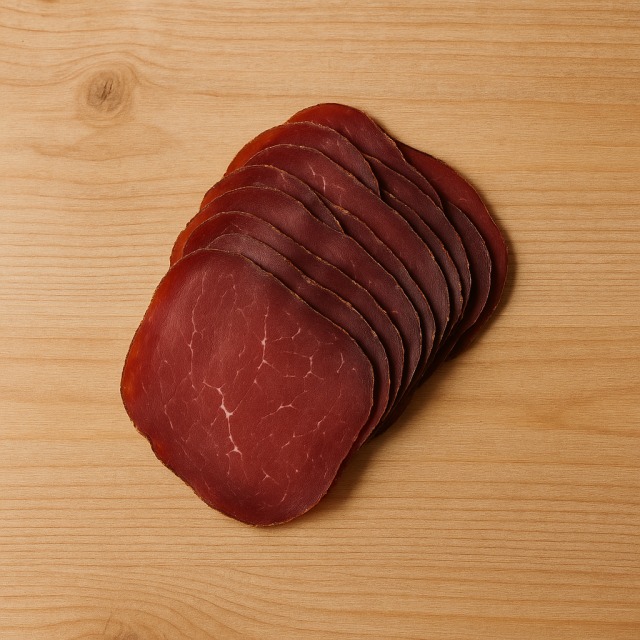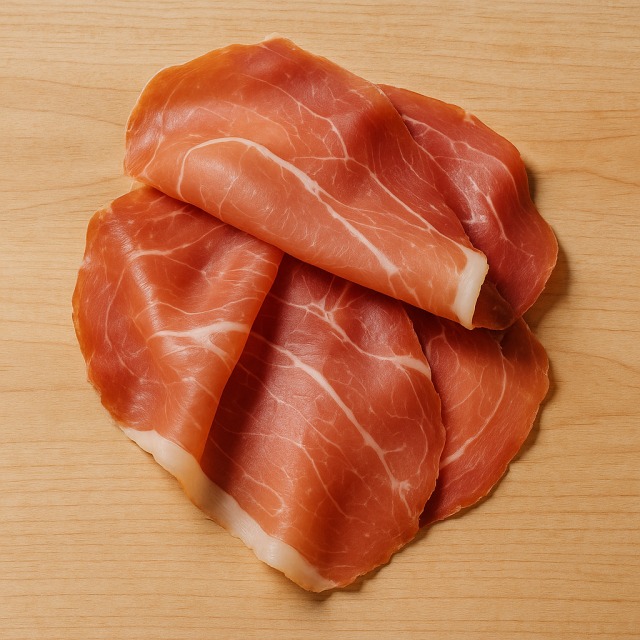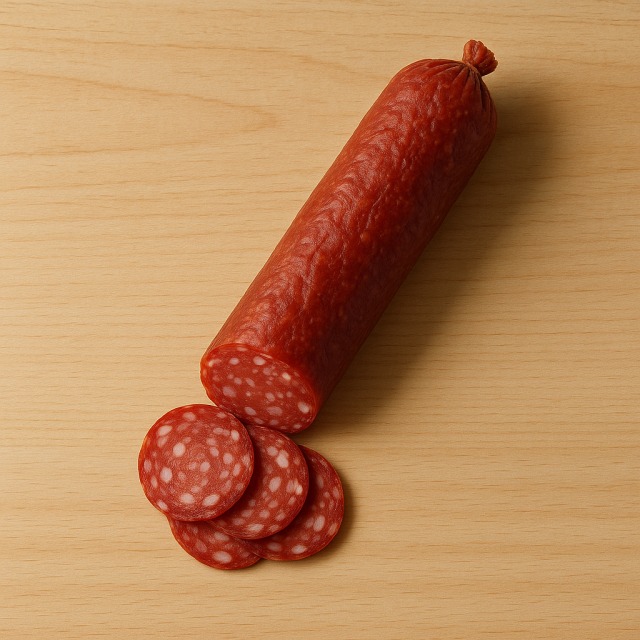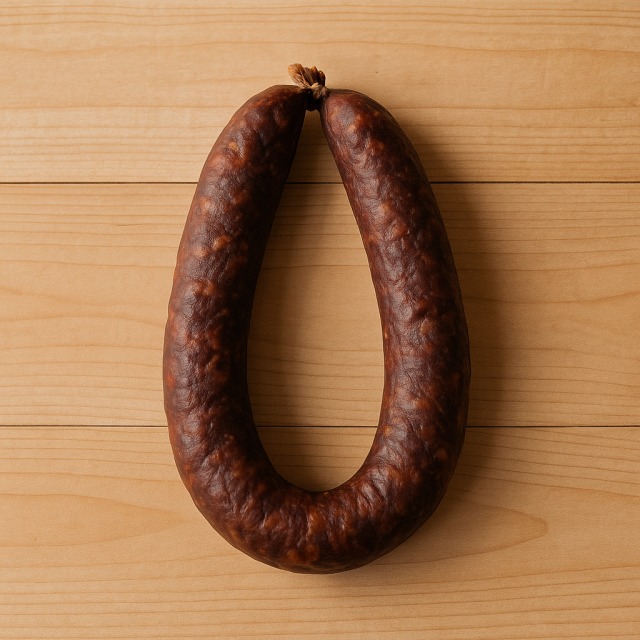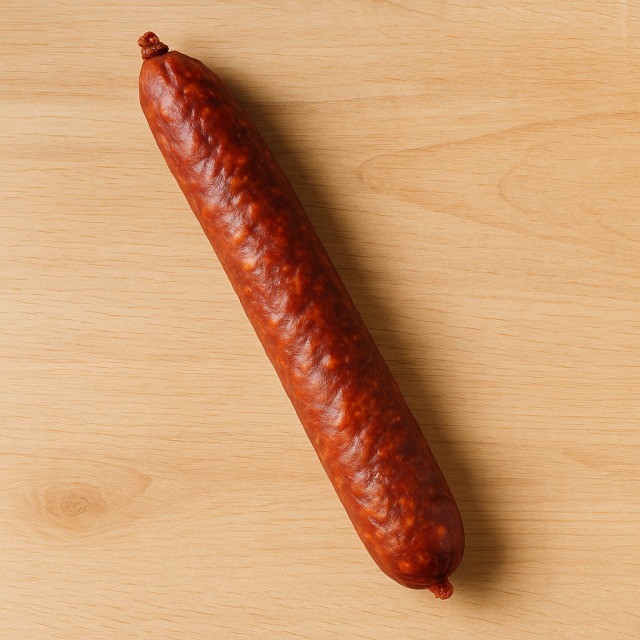Calorie Chart / Meat & Eggs / Coppa
How Many Calories Are in Coppa?
Calculation of the nutritional value & Recommended Dietary Intake of coppa
For g and a calorie requirement of kcal
| Calories 23 kcal | Proteins 2.2 g | Lipids 1.6 g | Carbohydrates 0 g |
| 1% | 3% | 2% | 0% |
Health benefits of coppa
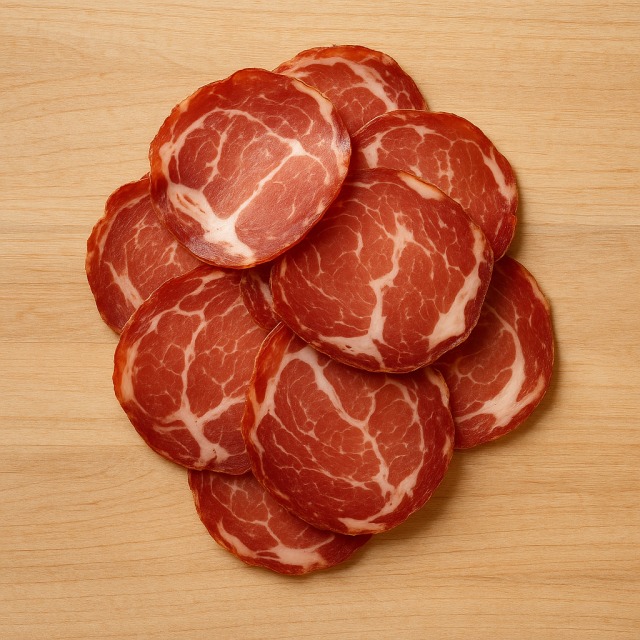
Coppa - 100g
Calories 290 kcal
Proteins 27 g
Lipids 20 g
Carbohydrates 0.5 g
Coppa is a traditional Italian dry-cured pork specialty that delivers a concentrated source of proteins and flavorful lipids. With 290 calories per 100 g, it is considered a high-calorie delicacy. Those calories come mainly from its 27 g of proteins that help maintain muscle mass, and 20 g of fats, including monounsaturated oleic acid also found in olive oil. Although its calorie density is high, the nearly zero carbohydrates make it attractive for low-carb or ketogenic eating plans that still monitor calories closely.
Coppa supplies significant amounts of vitamin B1 (thiamine) and vitamin B6, both essential for converting the calories you eat into cellular energy. Minerals such as iron and zinc support oxygen transport and immune function, while selenium acts as an antioxidant. Because it is dry-cured, sodium levels are elevated; adequate hydration and pairing with potassium-rich foods like tomato or melon can help balance electrolytes when managing daily calories. Its long maturation—sometimes over 6 months—concentrates flavor, allowing smaller portions to satisfy, a practical tip when counting calories.
Historically, coppa originated in Emilia-Romagna and was prized by farmers as a portable, shelf-stable meat providing reliable calories during fieldwork. Today, epicureans appreciate its marbled texture and nuanced aroma, proving that high-calorie foods can still play a role in balanced, mindful eating.
Tips for incorporating coppa into a balanced diet
Because coppa is high in calories, portion control is key: 30–40 g adds intense flavor without overwhelming your calorie budget. Create a balanced antipasto plate by pairing thin slices with fresh zucchini ribbons dressed in a light vinaigrette. The vegetables add bulk for minimal calories while highlighting coppa's smoky notes.
For a summer salad, toss diced coppa with cubes of sweet melon, peppery arugula, and a squeeze of lemon. This sweet-salty contrast reduces the overall calories per bite and delivers hydration and vitamin C.
Need a post-workout meal with controlled calories yet high protein? Mix coppa strips into a warm quinoa bowl, add grilled asparagus, and drizzle a teaspoon of olive oil. Quinoa's fiber tames appetite, while coppa's proteins support muscle recovery.
If you crave comforting pasta, use coppa instead of pancetta in a lighter carbonara: sauté 20 g of coppa with garlic, fold into whole-wheat pasta, and bind with one beaten egg and lots of black pepper. You get the traditional taste with fewer calories than the classic cream-laden version.
Frequently Asked Questions
- How many calories are in coppa?
- Coppa provides 290 kcal per 100 g.
- Is coppa suitable for a low-carb diet?
- Yes. Coppa contains only about 0.5 g of carbohydrates per 100 g, so nearly all its calories come from proteins and fats.
- Which vitamins and minerals does coppa supply?
- Despite its calories, coppa offers vitamin B1, vitamin B6, iron, zinc, and selenium, nutrients important for energy metabolism and immunity.
- How can I reduce calories when eating coppa on a charcuterie board?
- Limit coppa to a few thin slices (about 30 g ≈ 90 calories) and fill the plate with low-calorie options like cucumber sticks, grapes, or bell pepper strips.
- Is coppa higher in calories than cured ham?
- Yes. At 290 calories per 100 g, coppa typically exceeds the roughly 240 calories found in cured ham, mainly due to a higher fat content.
- Can athletes include coppa in a protein-focused, calorie-controlled plan?
- In moderate portions, coppa's 27 g of proteins per 100 g help meet protein targets; balancing total calories with complex carbs like brown rice and vegetables makes it athlete-friendly.
Similar foods
Information provided by Calorie Menu may contain inaccuracies or errors. It cannot, under any circumstances, substitute medical advice or medication.

